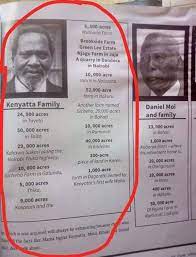In a distant world beyond the mighty oceans, a pink man, Robert K. Greenleaf (1904-1990), who believed that power-centered leaders were not effective, started the servant leadership movement. His works such as The Servant as a Leader (1970) have founded modern servant leadership studies – the servant leadership. Greenleaf, however, did not start servant leadership in America; it was founded in the rocky deserts of the brown people. Started by a young Jewish boy who came to win souls in all corners of the world- Christ Jesus.
A servant leader is one who is considers him/herself as a servant first, and then serves the people with humility while prioritizing needs of others above his own. Ancient Bukusu history is full of examples of servant leadership, elders who serve people with great humility and sacrifice.
But, good leadership in Bukusu culture was associated with nobility. A noble man or woman is one who earned respect in the community, for being good nurtured and has vast wealth and healthy family. Noble men where polygamists who has a good grip of leadership in their homesteads and good adjudication in their clans. These noble men were known as Kamang’ina (lilyang’ina) – the termite queen. They were highly respected and honored. They contributed to settling conflicts and promoting cohesion and adherence to customs and practices. Bukusu was paternalistic with few names of women. But, didn’t’ nobility starts with the woman of the homestead?
Kamang’ina ke Babukusu
Like Waswa Omulomi [Omuyemba] who organized Bukusu clans around the mighty Bukusu Hills in Tororo (where the author visited few months ago). Like Kitimule son of Wetoyi, [Omukitang’a] a wise diplomat who led Bukusu delegation to seek peace in Ebuyumbu (Tachoni). Or Makutukutu [Omukhurarwa] who took over leadership from Sioka during dispersal wars dying at Esilangilile, never to witness prophecy of his great grandson, Mango, slaying a giant snake. Or Lumbasi [Omutecho] a wealthy and wise court elder who erected a fort at Kangabasi (present day Malakisi).
Or Mulya [Omulunda], who drove a herd of cattle on Libale lya Makanda (Sang’alo Hills) leading footprints to this day! And Makita wa Nameme [Omutilu] whose war drums united the people as far as Mundoli, Marachi, Samia and Bunyala (Port Victoria). And Nasokho we Buyemba, Masiribayi, Tolometi, Wekuke, Makanda -the list goes on…every clan priding on their own.
Sikhokhone: Omuyiitu Nobleman
Today, the author lands in his own clan: Ebuyiitu – talking about Sikhokhone, a noble man- A definition of wisdom itself.
The tale starts with Musamali the (probably eldest) son of Namunyulubunda. Having undergone the knife at Ebwayi, Namunyulubunda was an Omukolongolo ‘A’ –the circumcision set that immediately followed Mango around 1812. The Omutukwiika Omukitang’a grew to be an influential leader, with immense cattle wealth and political power. He is remembered for uniting the clans after military invasion of Bapala building them a fort in Namototowa. Musamali thus enjoyed a great deal of wealth with vast lands and countless herds of cattle.
With many cattle to take care of, Musamali sought a help of a herder. History recounts that an elderly man came forth to help Musamali. He was known as Khakhutu, later to be known as Sikhokhone – an Omuyitu elder.
A few days afterwards Musamali came to realization that the old man looking after his cattle was a nobleman. He was troubled and profusely apologized. Back in day, it was bad, even punishable to employ or despite a wearer of elder’s robe – ekutusi. Musamali had offended his lands and his people by asking the elderly man to look after his cattle. In a turn of events, Musamali would call elders, apologize to them and offered a fat-cow to Sikhokhone so that he could milk.
The status of Sikhokhone grew tenfold in the community. He was officially installed as a nobleman and probably showered with many presents. He was soft spoken, wise and showed willingness to help others. He had no pride and his wisdom was soon realized in community courts as he helped in settling cases.
Sikhokhones’ wealth and popularity grew upon his installation as a clan elder. With great humility he extended help, brought people together and they were happy to be under leadership –a new crop of leadership, one whose leader was a servant of the people.
Tribute: As wise as my Omuyitu grandfather, Wanyama Simbona Munialo, may the heavens give you endless days to see bechukhulu [grandsons], bisoni [great grandsons], bimiila [great-great grandsons], bibingukhu [great-great-great grandsons], and bisakha malalu [great-great-great-great grandsons]
Next, we look at Wambilianga from Ebubuulo, Sikhokhone’s evil twin –living on the other extreme –rebellious, mean and community nuisance.
A story is good, until another is told
……………………End…………………………….












Comments